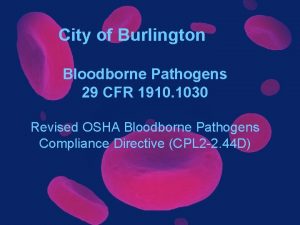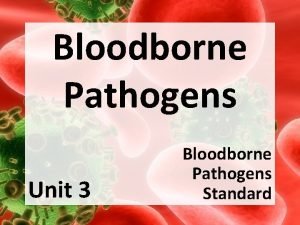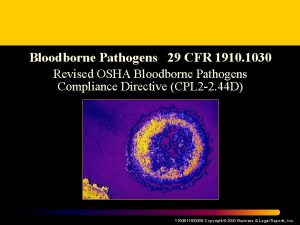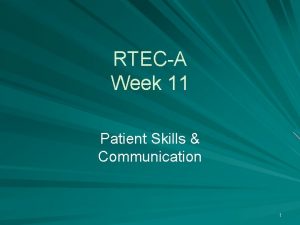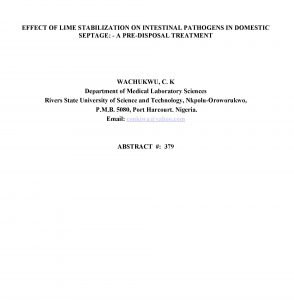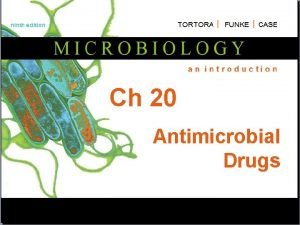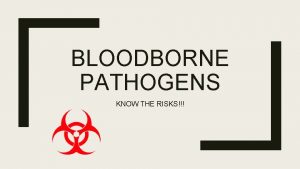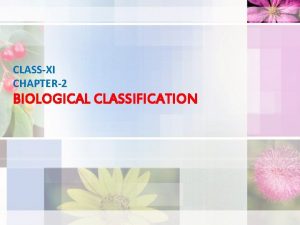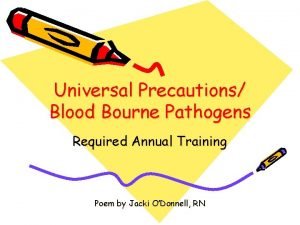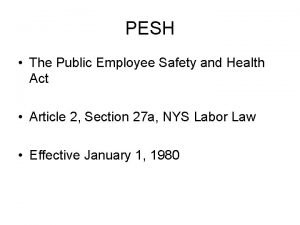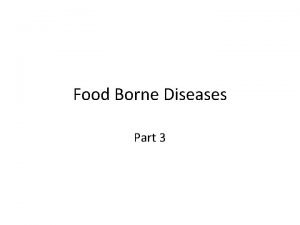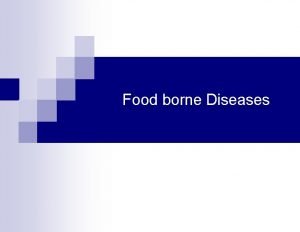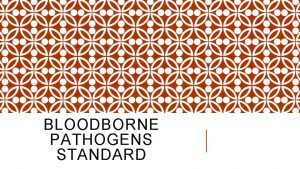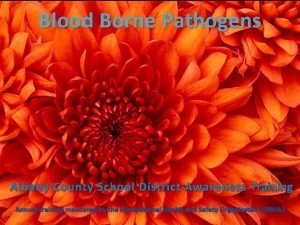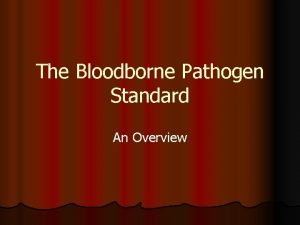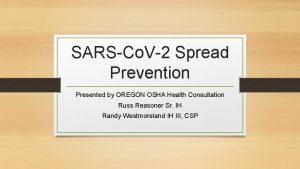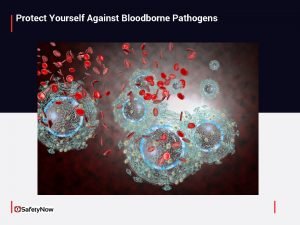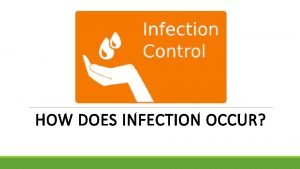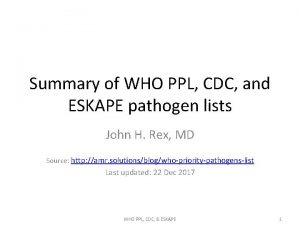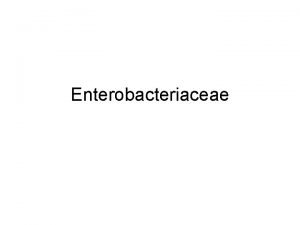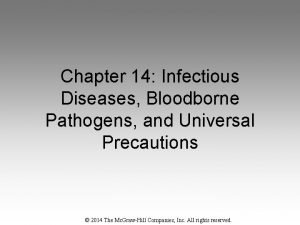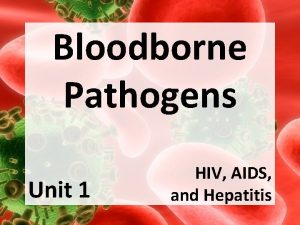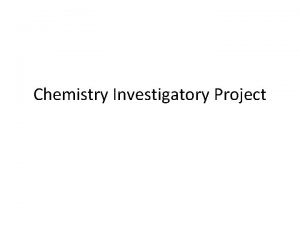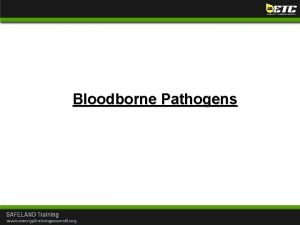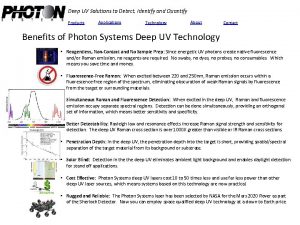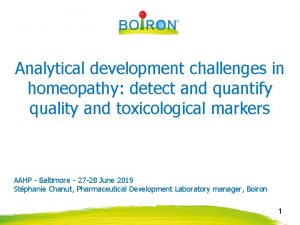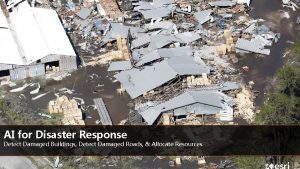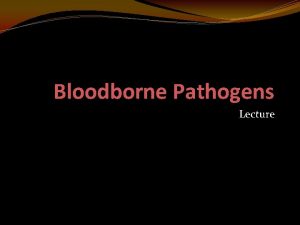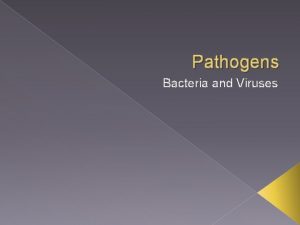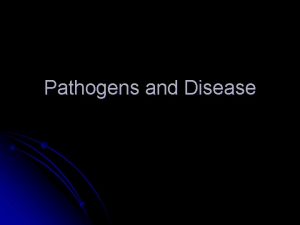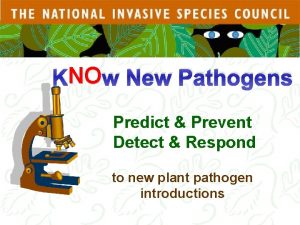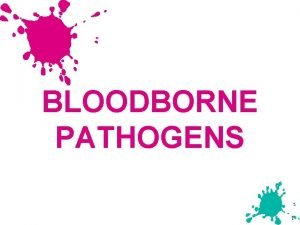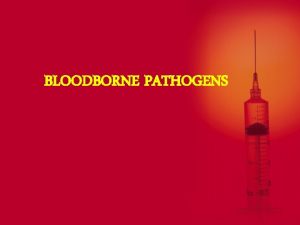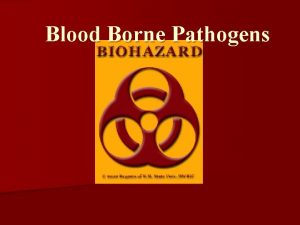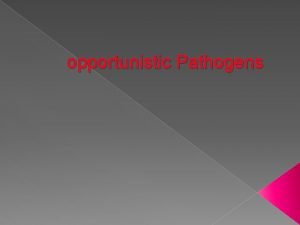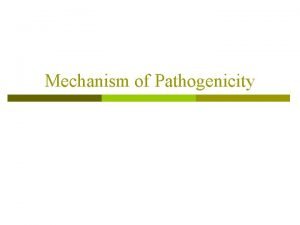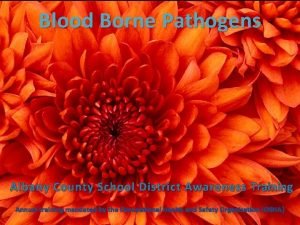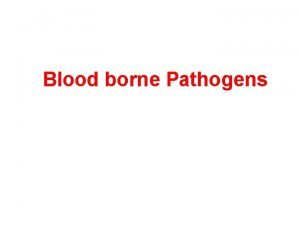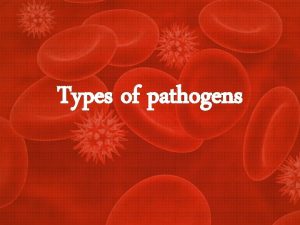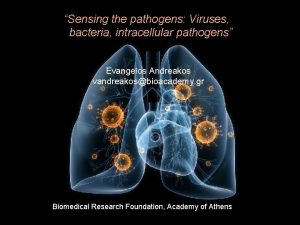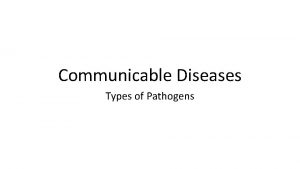Methods to Detect and Quantify Pathogens Charles P




























- Slides: 28

Methods to Detect and Quantify Pathogens Charles P. Gerba Professor Dept. of Soil, Water and Environmental Science University of Arizona

Issues in Detection • Sensitivity – Detection Volume and presence of interfering substances that reduce assay sensitivity • Specificity – is it the right organism or group of organisms • Quantification - precision

Methods and Microbes • No method for concentration and detection is 100% efficient • Microbes are individuals • Microbes are particulates not solutes, and are not necessarily evenly distributed in a given media (air, water, soil)

Cultural/Standard Methods for the Detection of Pathogens in the Environment • Virus – Concentration/separation – Cell culture (one cell line does not detect all) – Serology (identification) • Bacteria – – Concentration/separation Enrichment media Selective media Biochemical tests, serology, immunochemical

Methods for the Detection of Pathogens • Protozoa – Concentration or elution – Purification • Differential centrifugation • Immune Magnetic Separation – Stain with monoclonal antibodies – Observe under UV light – Examine for characteristics • Shape and size • Internal structures

Typical Sample Volumes for Water • Bacteria – 100 ml • Viruses – – Raw Sewage 1 -5 liters Treated sewage 40 liters Surface waters 400 liters Drinking water 400 to 2000 liters • Protozoa – Treated sewage 4 liters – Surface waters 10 to 100 liters – Drinking water 10 to 100 liters

Time and Cost for Assay of Enteric Pathogens in Water • Bacteria – 2 to 5 days; $40 to $200 • Virus – 14 to 60 days; $500 to $1, 200 • Protozoa – 2 to 3 days; $250 to $450

Enumeration of Microbes • CFU Colony Forming Unit • PFU Plaque Forming Unit • MPN Most Probable Number


Steps Involved in the Detection of Waterborne Enteric Viruses and Parasites Sample Collection Concentration Purification Replication Identification Quantification Isolation and/ or Characterization



Noninfected monkey kidney cells

Monkey cells infected with poliovirus


Principles of Protozoan Detection in the Environment • • Filtration of large volumes of water Concentration Purification Method of detection coupled with an ability to quantify the desired microorganisms

Parasite Concentration • Pall Gelman Envirocheck Sampling Capsule • Used for US EPA method 1622 – Protozoa detection: Cryptosporidium and Giardia Envirocheck Sampling Capsule

Methodology (filtration/concentration with Filta-Max) • After a volume of water is passed through a filter cartridge, the eluted solution is then concentrated Filta-Max. TM

Methodology • The concentrate is then purified • This is accomplished by immunomagnetic separation (IMS) Puri-Max. TM

Purification by IMS Parasite cysts or oocyst antibody Paramagnetic microbead

Detection by IF • Detection method is based on an indirect immunofluorescent antibody (IFA) stain 2 o labeled Ab (FITC) Primary antibody or t s st y C cy Oo


Cell Culture-Cryptosporidium Take purified sample expose to 10% bleach for 10 min to inactivate viruses and bacteria, algae, fungi Inoculate sample onto HCT-8 cells Wash and perform excystation Examine cells for evidence of infection and growth of Cryptosporidium life stages • microscope (bright field/IFA) • ELISA • PCR




Aerosol Sampling • • • Impingers Impact- Anderson Aerosol Filters High volume fluid samplers Electrostatic participators Settling plates

Aerosol Sampling • Efficacy affected by – Collection media – Relative humidity – Desiccation
 Jug is countable or uncountable
Jug is countable or uncountable Hard skills for resume
Hard skills for resume Human pathogens and toxins act
Human pathogens and toxins act Charles manson childhood
Charles manson childhood Bloodborne pathogens quiz answers
Bloodborne pathogens quiz answers Unit 3 bloodborne pathogens standard
Unit 3 bloodborne pathogens standard Bloodborne pathogens quiz answers
Bloodborne pathogens quiz answers Blood borne pathogens
Blood borne pathogens Major human pathogens
Major human pathogens Clindamycin metabolism
Clindamycin metabolism Bloodborne flora
Bloodborne flora Bloodborne pathogens know the risk
Bloodborne pathogens know the risk Six kingdoms worksheet
Six kingdoms worksheet Blood bourne pathogens
Blood bourne pathogens Exposure control plan bloodborne pathogens
Exposure control plan bloodborne pathogens Food borne pathogens
Food borne pathogens Food borne pathogens
Food borne pathogens Exposure control plan
Exposure control plan Bloodborne pathogens awareness training
Bloodborne pathogens awareness training Osha's bloodborne pathogens standard covers
Osha's bloodborne pathogens standard covers Osha safety pyramid
Osha safety pyramid How to protect yourself from bloodborne pathogens
How to protect yourself from bloodborne pathogens An exogenous disease originates outside the body.
An exogenous disease originates outside the body. Eskape pathogens cdc
Eskape pathogens cdc Bloodborne pathogens standard precautions
Bloodborne pathogens standard precautions Enteric pathogens definition
Enteric pathogens definition Chapter 14 worksheet bloodborne pathogens
Chapter 14 worksheet bloodborne pathogens Bloodborne pathogens attacking the liver are
Bloodborne pathogens attacking the liver are To detect the presence of adulterants in sugar
To detect the presence of adulterants in sugar




